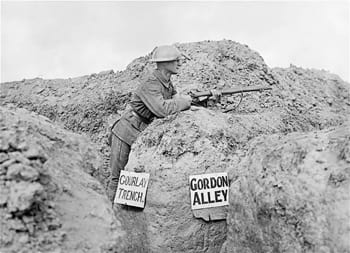Most of us learn everything we know about war from movies. Where else are we supposed to get our information from, the news? Documentaries? Actually signing up to serve? Nah, just watching The Hurt Locker 10 times will do the trick, right? Except that war movies are constantly lying about war to moviegoers, because as it turns out, war is super complicated and needs to be simplified for mainstream audiences. That's why a lot of aspects of war that we take for granted are about as factually accurate as that scene in The Patriot where Mel Gibson stabs a man with the American flag and wins the Revolutionary War. For example ...
5 Tanks Were Unreliable Death Traps
Movies like Patton and Fury clearly dictate that tanks are where it's at. And, of course, they're absolutely right. Thick armor plating, treads capable of climbing over uneven surfaces (like enemy faces), a gigantic cannon capable of shooting God right out of the sky ... what's not to like?

They even make Shia LaBeouf look cool.
Yeah, they're a real sweet deal when everything's going fine.
But what if a tank gets stuck?

"AAA says we're out of their service area."
Despite them being portrayed as the modern-day cavalry, you really did not want to be part of an armor crew in either the first World War or its illustrious sequel. The tanks of WWI were the first-ever tanks to be used in war -- and they were a total nightmare. They broke immediately, and when they did work, they got bogged down and generally could not cope with the terrain at all. When the first tanks arrived in Europe, one tank commander wrote:
"I and my crew did not have a tank of our own the whole time we were in England. Ours went wrong the day it arrived. We had no reconnaissance or map reading ... no practices or lectures on the compass ... we had no signaling ... and no practice in considering orders. We had no knowledge of where to look for information that would be necessary for us as tank commanders, nor did we know what information we should be likely to require."
 via
via 
 Warner Bros.
Warner Bros. Columbia Pictures
Columbia Pictures


92 Comments
Load Comments